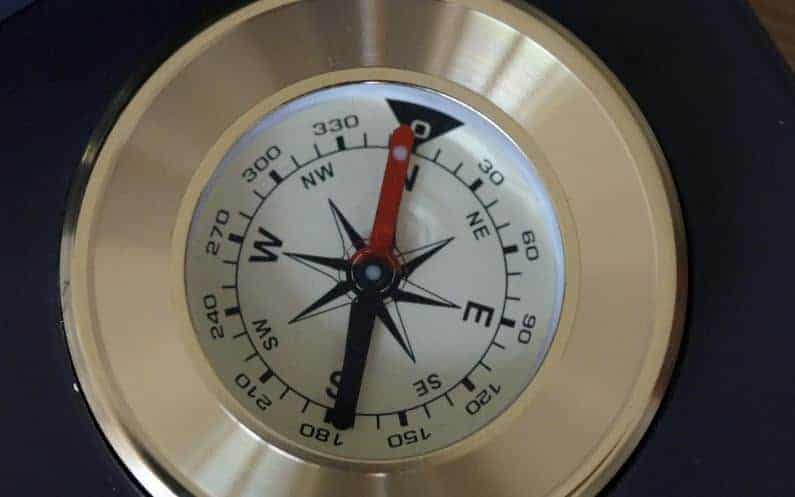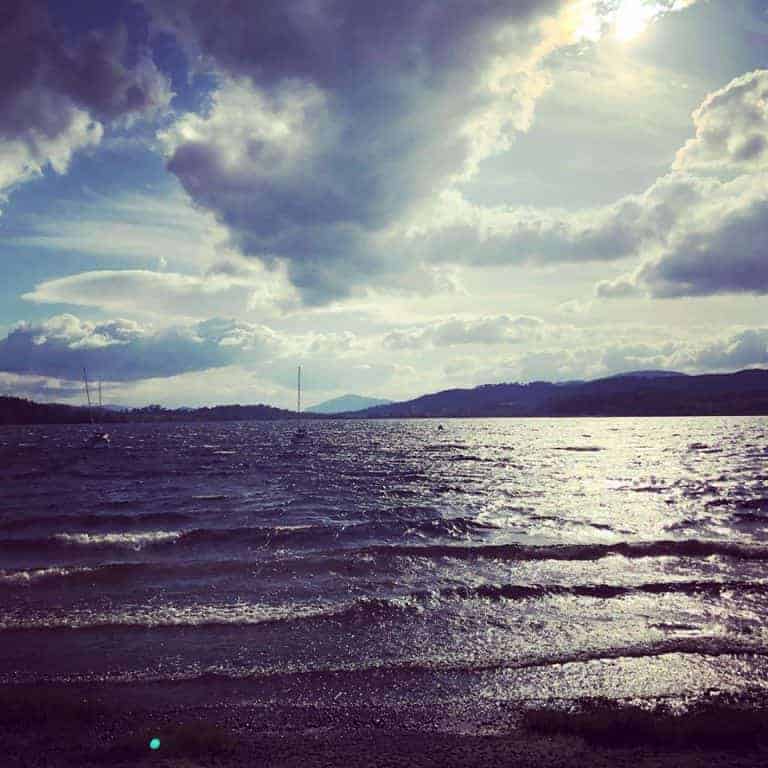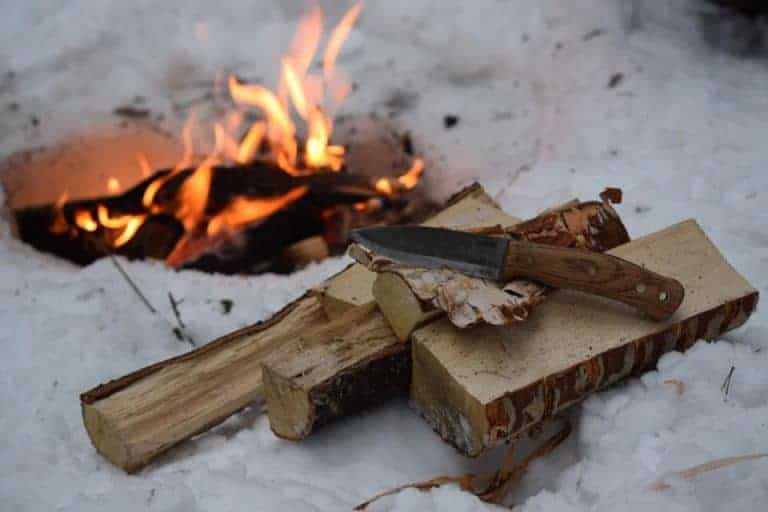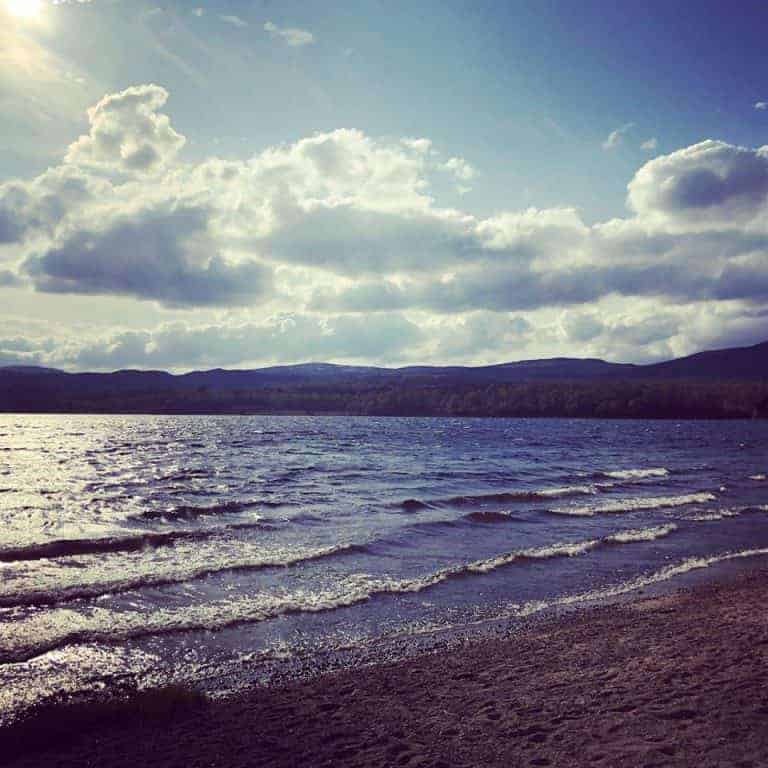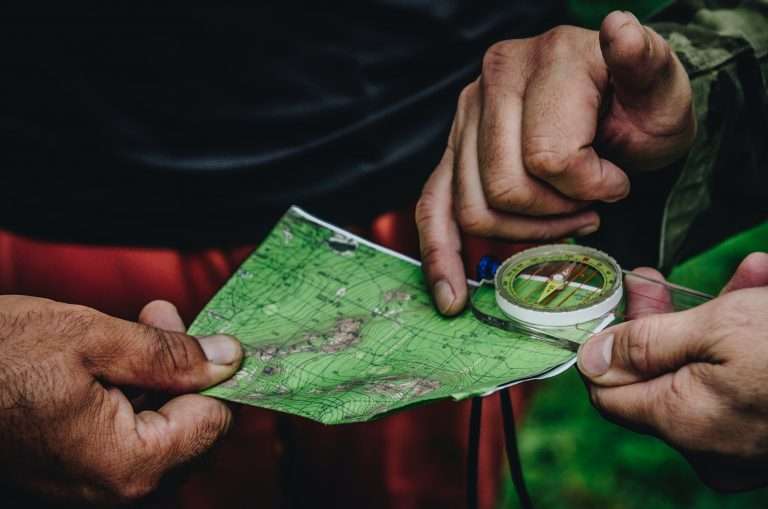Natural navigation
These days we tend to rely on using maps and technology to help us get around, but believe it or not, it is possible to find your way around without modern gizmos. It is a skill you can practice anywhere.
A compass can help you test out your natural navigation skills and is a useful back-up if you do get lost. Just make sure that the big red arrow is always pointing north.
Different types of natural navigation
Shadow stick
By using a long stick, you can find your direction using the shadow cast from the sun. Place a straight stick about one metre long into the ground. The sun will now cast the shadow of the stick. Mark the end of the shadow and this becomes your west point. Wait 15 to 30 minutes and as the earth rotates around the sun, the shadow will move.
Mark the shadow again and this will become your east point. You will now have your east-west line. If you stand on your east-west line with west on your left and east on your right, you are looking north.
Tree and moss growth
Where trees tend to grow upwards towards the sunny south, moss prefers the cold damp north. Find a lone tree out in the open. It is generally thought that the side of the tree with the most growth indicates south. The north side will have less growth and what growth is there will be pushing upwards towards the sun.
You will be able to find your north-south line and once you know that you can then work out the east-west line. The more trees you find leaning towards the sun and the more moss patches hidden in the shade of the tree, the more chance you will have of finding a good indicator of north and south.
Watch method
For this method, you need an analogue watch, which will act as a compass. If you are in the northern hemisphere, lay the watch flat and face up in your palm, making sure the face is parallel with the ground. Point the hour hand in the direction of the sun. It does not matter what the time is as long as it is accurate. Now all you need to do is divide the angle between the 12 o’clock mark and the hour hand. This will give you the south-north line. In the southern hemisphere, you will need to point the 12 o’clock mark at the sun rather than the hour hand. This will give you a north-south line.
Night navigation
Stars
For this method, all you need is a clear night sky and to be able to identify the Plough. The Plough, also known as the Big Dipper, consists of seven stars and looks like a large pan. It is part of the Ursa Major (Great Bear) constellation. Once you have identified the Plough, locate the last two stars that form the pan section (furthest away from the ‘handle’) and follow them upwards in a straight line by four times their own distance and you will have found the Polaris, or the North Star. The star sits directly over the North Pole, so if you walk towards it, then you are heading north.
Moon
This method only works with a crescent moon. Draw a straight line down from the top part of the crescent to the bottom point and follow that line to the horizon. Where you meet the horizon is south.
You can check whether you have got these methods right by using a compass, or the compass app on your phone. Once you have developed good navigation skills, you can confidently roam freely whilst enjoying the great outdoors.
Come and join us for an adventure out in the woods on our of our bushcraft courses. Visit our courses page for more details or get in touch.

